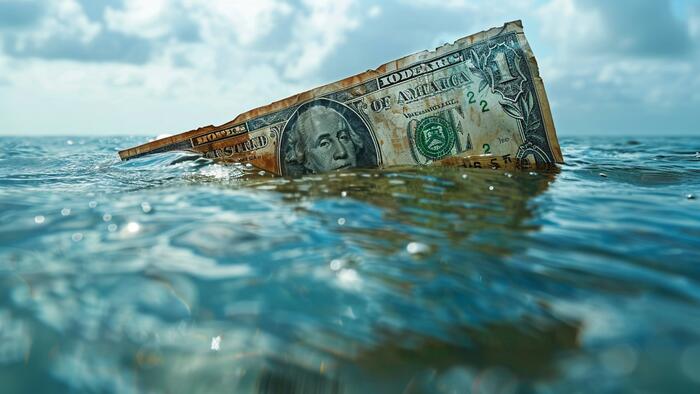The current state of the U.S. dollar (USD) is often equated to a large-scale Ponzi scheme, driven by soaring public debt and ongoing deficits. The dollar has effectively become a currency backed by debt, which necessitates continual economic growth to manage the escalating interest obligations. This reliance on perpetual inflation is vital to maintaining the value of the existing debt, as it transfers wealth from savers to the government and banks. Without a steady influx of new borrowers, the system risks collapse, underscoring its fragility. Furthermore, the status of the USD as the global reserve currency, particularly under the petrodollar system, is a cornerstone of its stability. If this were to decline, just as confidence in Ponzi schemes wanes without new investments, the USD could face a similar fate.
One of the promising yet flawed proposals suggested by President-elect Donald Trump involves replacing the income tax with tariffs. While the idea has an appealing surface, it encounters inherent challenges, especially in a nation that has long transitioned from manufacturing to service-oriented industries. Such an economic framework raises questions about the legitimacy and practicality of relying heavily on tariffs to sustain fiscal health. Moreover, it does not adequately address the systemic issues plaguing major world economies, many of which operate on debt-driven models akin to Ponzi schemes. The need for the U.S. to revert to a monetary system attached to real value, like gold, remains paramount to untangling from the current precarious situation.
The overall U.S. public debt has reached staggering heights, currently standing at $35 trillion, coupled with rising interest rates that exert additional pressure on an already fragile financial system. Central figures in the government, including the Federal Reserve and the Trump administration, are grappling with the repercussions of these monetary policies, attempting to keep interest rates manageable. However, this situation is akin to inflating a balloon that is on the brink of bursting. The burdens of servicing this debt and an ever-increasing deficit are pressing realities that can no longer be ignored. This looming debt crisis signifies that the existing economic measures are insufficient to stave off the harmful consequences of this indebtedness.
The collapse of the U.S. dollar, while potentially devastating, appears to be an inevitable eventuality, especially if the current trajectory continues unaltered. The longer the system persists without rectification, the more destructive the fallout will be when the bursting occurs. Investors and citizens alike will experience increased pain as the dollar loses value and stability, echoing the dynamics of traditional Ponzi schemes. As the financial landscape shifts, those who have previously profited stand to lose significantly, emphasizing the importance of transparency and systemic stability in the economy.
In contemplating the potential aftermath, some argue that a reset towards sound money and more sustainable economic practices could emerge from the ashes of a dollar collapse. However, the history of the 2008 financial crisis serves as a cautionary tale regarding elite exploitation during periods of crisis. It is likely that the same powerful entities could seek to capitalize on such a significant economic downturn to impose more centralized control over financial systems, thereby leading to increased socio-economic disparities. This potential for exploitation raises critical questions for policymakers and citizens regarding the structure of a post-collapse economic order.
Investors and individuals looking for ways to shield themselves from the anticipated fallout should consider assets like gold, which has historically offered a hedge against inflation and instability. However, the recognition that a comprehensive financial collapse will indiscriminately affect many, regardless of prior protective measures, highlights the gravity of this impending crisis. As the Ponzi-like characteristics of the USD become increasingly evident, the onus shifts onto society to confront these economic realities and seek pathways toward a more resilient and grounded financial future. In summary, the fate of the USD and the broader economy prompts urgent discourse on the necessity for reform and the enactment of principles that anchor monetary systems in tangible value.

